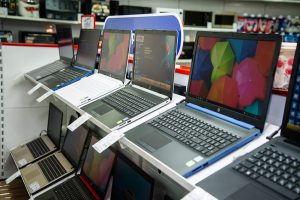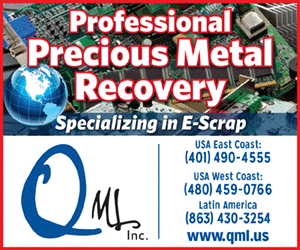
California regulators plan to lower the fees consumers pay to fund electronics recycling. The issue? The state is accumulating too much money.
The California Department of Resources Recycling and Recovery (CalRecycle), which oversees the oldest state e-scrap recycling program in the country, is proposing to lower the fees consumers pay when they buy new electronics.
The move is in response to e-scrap processors handling significantly lower weights of regulated material in recent years. As a result, CalRecycle is paying processors less money out of the state fund, and the fund balance keeps growing.
The fees vary depending on the size of the screen. They are currently $5 for each device with a screen less than 15 inches (anything 4 inches and less is exempt), $6 for 15- to 34-inch screens and $7 for 35-plus-inch screens. At the CalRecycle monthly public meeting scheduled for June 18, the agency will consider reducing the charges to $4, $5 and $6.
Under the state program, fees are paid on purchases of new CRTs TVs and monitors (not a reality in today’s marketplace), LCD TVs and monitors, laptops and tablets with LCD screens, plasma TVs, and portable DVD players with LCD screens.
The state collects the money and uses it to pay companies that collect and recycle covered devices. CalRecycle currently provides collection and recycling payments of 49 cents per pound for CRTs and 60 cents per pound for non-CRT covered devices. It paid them a combined $53.5 million during the 2017-18 fiscal year.
All told, from Jan. 1, 2005, when the program began, through the end of 2018, the state has paid e-scrap processors about $1 billion to recycle over 2.3 billion pounds.
Dropping weights
California’s program has seen lower collection and recycling weights since 2012, but the decreases have accelerated over the past few years, in particular. Last year, CalRecycle received payment claims for just over 100 million pounds of e-scrap, down 21% from 2017, which was down 17% from 2016, which was down 13% from 2015.
“In recent years, the amount of recovered and recycled CRT devices has continued to decline significantly due to legacy stockpile depletion, at the same time as the amount of non-CRT devices increases,” CalRecycle staff wrote in a memo.
The end-of-life stream has been shifting in California for years, as the CRT wave has broken and receded. In 2013, non-CRT devices made up over 2% by weight for the first time. Fast forward to 2017, when they made up 14% by weight. Last year, non-CRT devices made up about 20% of the stream.
The shifts prompted CalRecycle to create a non-CRT payment rate last year. Previously, the agency paid processors the same rate for all covered device types.
Because CalRecycle is paying processors less out of the fund, the balance has grown. CalRecycle expects to end the 2018-19 fiscal year with a fund balance of $113.5 million, up from $110.9 million the year before.
If approved, the lower fees would go into effect starting Jan. 1, 2020, midway through the 2019-20 fiscal year, which starts July 2019 and runs through June 2020. If CalRecycle kept the current fees, it would collect about $86.5 million during the 2019-20 fiscal year. If it reduces each fee by $1, it would expect to bring in $80.9 million.
In memos, CalRecycle staff say the reduced fees will bring the fund reserve down over the next few fiscal years while still providing enough money to run the program and respond to unexpected expenses.
Photo credit: woff/Shutterstock
More stories about EPR/stewardship
- ERCC outlines shift toward convenience benchmarks
- Diversion Dynamics: Vape recycling needs policy to reach full charge
- E-Scrap EPR round-up part 3: Illinois and Oregon



